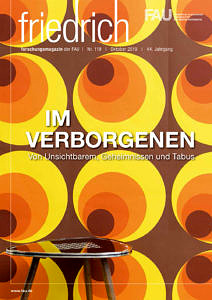Light-sheet microscopy: an underground train system for immune cells
Bones are hard organs, but inside they house a dense network of blood vessels. This is why bone fractures often cause serious bleeding. Until now, however, scientists didn’t realise that blood was transported inside bones through tiny, previously undiscovered tubes. ‘This previously unknown network of blood vessels in bones is similar to an underground train system that is able to successfully transport oxygen and immune cells into the blood stream quickly and directly,’ says Dr. Anika Grüneboom, head of a junior research group at the Chair of Internal Medicine III. ‘In the case of inflammatory diseases such as bacterial infections, it is especially important that the cells reach the source of the inflammation quickly.’
As the blood vessels run the entire length of the compact bone, the corticalis, they are named ‘trans-cortical vessels’. Until now, nobody appreciated the variety of these blood vessels. Measuring methods suitable for recognising blood vessels as small as these were not available. Grüneboom made a break-through by combining two measuring methods: light-sheet microscopy and two-photon excitation microscopy.
Photographers often combine various measuring procedures to get the perfect shot. Anyone who wants to use a telephoto lens to zoom in on a faraway object first has to use a shorter focal length – such as the naked eye – to judge whereabouts they need to aim the shot. The telephoto lens is not suitable for this first rough estimate, as the field of view becomes blurred too easily.
Grüneboom used light-sheet microscopy first of all to get a basic overview of the bone structure. This procedure can be used to measure tissue samples of up to one cubic centimetre in size without the need to dissect them, unlike traditional histological methods which require the sample to be cut into wafer-thin slices. Whilst fragments of blood vessels had been discovered during the process, dissecting samples meant that it was no longer possible to see how the structures related to each other.
Light-sheet microscopy, however, allows tissue structures to remain unharmed. In order to make the sample optically transparent and ready for examination under the microscope, the tissue was treated with chemicals. Until now, this procedure had mainly been used for investigating cerebral matter. Grüneboom was the first to use it to analyse human tissue in shin bones, and was able to localise the minute blood vessels as a result.
The biologist then used a two-photon excitation microscope as her telephoto lens. This technique allows the blood vessels to be shown in the living organism at a resolution of just a few millimetres and on all three axes. As a result, she could accurately measure the volume of blood passing through the transcortical vessels.
Her findings are groundbreaking: approximately 1000 blood vessels are found in a mouse’s shin bone. Not only that, roughly 70 percent of the blood transported internally through the bone passes through these small, previously undiscovered vessels. ‘These findings will help us understand the change processes within the bone much better in future,’ explains Grüneboom.
From a scientific point of view, it appears surprising that anatomical structures are still being found in the 21st century which are not fully described in anatomy textbooks. Many questions remain unanswered, the area of research is wide-reaching. Further research is now required to clarify the role of trans-cortical vessels for normal bone remodelling and in conditions such as osteoporosis or tumours that metastasise in bones. It is hoped that the answer will provide new options for early diagnosis and treatment.
by Frank Grünberg
Here we present four further imaging methods:
Endomicroscopy: Rapid test for polyps
Computer tomography: weight-bearing scans
Endomicroscopy: diagnosing tissue without artificial contrast agents
Multi-spectral optoacoustic tomography (MSOT): tracking haemoglobin
FAU research magazine friedrich
 This article first appeared in our research magazine friedrich. You can order the print issue (only available in German) free of charge at presse@fau.de.
This article first appeared in our research magazine friedrich. You can order the print issue (only available in German) free of charge at presse@fau.de.
